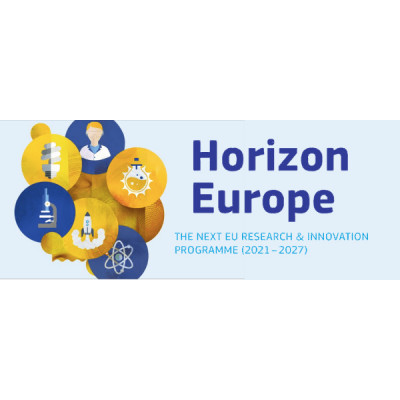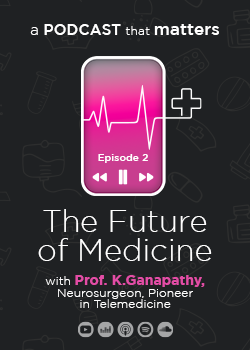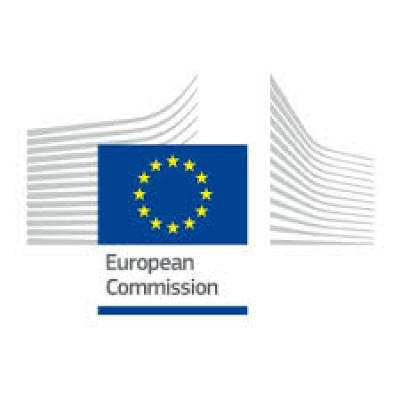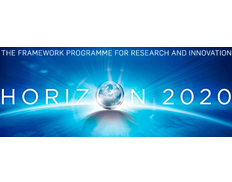
Sustainable Competitive Digital Green Rail Freight Services
Details
Description
Call Updates
Jun 28, 2022 2:57:11 PM
A total of 7 proposals were submitted to this call.
- HORIZON-ER-JU-2022-FA5-01 : 1 proposal
The evaluation of the proposals will start in June and will be finalized in July 2022.
Applicants are expected to be informed about the outcome of the evaluations, indicatively, mid-August 2022.
The successful proposals will go through the Grant Agreement Preparation (GAP) phase and the deadline for the Grant Agreement signature is end November 2022.
Jun 10, 2022 11:16:55 AM
On 10 June 2022 a new release of the "Questions & Answers" document was published (Topic Conditions section: Additional Documents).
May 24, 2022 12:02:29 PM
On 24 May 2022 a new release of the "Questions & Answers" document was published (Topic Conditions section: Additional Documents).
May 11, 2022 2:14:45 PM
On 11 May 2022 a new release of the "Questions & Answers" document was published (Topic Conditions section: Additional Documents).
May 2, 2022 3:38:50 PM
On 02 May 2022 a new release of the "Questions & Answers" document was published (Topic Conditions section: Additional Documents).
Apr 20, 2022 1:08:00 PM
On 20 April 2022 a new release of the "Questions & Answers" document was published (Topic Conditions section: Additional Documents).
On 31st March 2022 a new release of the "Questions & Answers" document was published (Topic Conditions section: Additional Documents).
Mar 22, 2022 12:07:16 PM
On 22 March 2022 a new release of the "Questions & Answers" document was published (Topic Conditions section: Additional Documents).
Mar 10, 2022 8:10:59 AM
The submission session is now available for: HORIZON-ER-JU-2022-FA5-01(HORIZON-JU-IA)
Sustainable Competitive Digital Green Rail Freight Services
TOPIC ID: HORIZON-ER-JU-2022-FA5-01
Programme: Horizon Europe Framework Programme (HORIZON)
Work programme part: HORIZON-JTI-ER-2022
Call: EU-RAIL JU Call Proposals 2022-01 (HORIZON-ER-JU-2022-01)
Work programme year: HORIZON-JTI-ER-2022
Type of action: HORIZON-JU-IA HORIZON JU Innovation Actions
Type of MGA: HORIZON Lump Sum Grant [HORIZON-AG-LS]
Deadline model: single-stage
Opening date: 10 March 2022
Deadline date: 23 June 2022 17:00:00 Brussels time
DESTINATION 5 – Sustainable Competitive Digital Green Rail Freight Services
The objective of this Destination is to make rail freight more attractive through better services to the European supply chain by the following threefold : Increasing capacity in a smart way for all types of rail freight transport( e.g. with Digital Automatic Coupler (DAC) and other technological and operational solutions), Improving cross-border operation ( cross border implies an important share of freight traffic and it expected to grow ) and finally a better multimodal service offering. In addition to all these, this destination aims to contribute if necessary in the delivery of harmonization by means of contributing on the definition of European Standards.
Those objectives should be addressed aiming to deliver solutions in the following areas:
- Full digital freight train operations enabled by key technologies for transforming the European Rail Freight sector which will increase productivity (time and cost reduction), efficiency (through process automation) and service quality, all of that leading to an increase of competitiveness. Together with a “smart” increase of capacity, more freight traffic can be shifted to the European rail system, significantly contributing to the EU Green Deal. The development of innovative freight assets (e.g. innovative freight wagons, last mile solutions, terminals) allow to further improve the competitiveness of rail freight by reducing LCC [Life Cycle Costs LCC], operational costs and also increasing automation.
- A seamless rail freight with a significantly reduced average transportation time based on an agile, interoperable and open environment within integrated and harmonized European mobility networks which interacts with other businesses; an environment in which companies can optimize their operations; for railway undertakings and intermodal operators, this results into higher productivity, better capacity utilization, improved planning possibilities and, through the reduction of cross-border barriers and multimodality, faster transport handling, altogether resulting into higher reliability. In addition, comprehensive multimodal and transparent customer information in combination with easy booking and managing functions, lead to an increase in customer satisfaction and easier access to rail-based services. Being based on harmonized European data this leads to higher predictability and planning possibilities.
The selected proposal for funding under this Destination will be a Flagship Project of Europe’s Rail JU with significant expected impacts, which require an integrated sector systemic approach. Proposals, should therefore set out a credible pathway to contributing to all of the following expected impacts as described in the Europe Rail JU Master Plan.
|
Meeting evolving customer requirements |
Improved EU rail supply industry competitiveness |
More sustainable and resilient transport |
Reinforced role for rail in European transport and mobility |
Improved performance and capacity |
Reduced costs |
||
Proposals under this Destination should set appropriate monitoring and demonstration activities to measure the following KPIs:
In the field of European full digital freight train operations
- Decrease train formation/decomposition (shunting/coupling/uncoupling) time:
- Expected time reduction targeting 40-50%.
- Decrease train preparation/ departure process time:
- Expected time reduction targeting 40-70%.
- Demonstrate increased average train length [m] up to maximum length in existing infrastructure limitations or higher loads:
- Train length increased up to 1.500 m.
In the field of seamless rail freight
- Reduce average transportation time on reference corridor:
- Average transportation lead time reduced targeting towards the MAWP objective 10-20%.
- Reduce operational dwell time at borders and other handover points:
- Dwell time reduced targeting towards the MAWP objective 50%.
- Reduce the number of additional non-added value operational stops (limiting also the energy consumption):
- Reduced number of operational stops targeting 20%.
- Reduce handling/response time for ad-hoc cross-border path requests:
- Reduced time by targeting towards the MAWP objective 70%.
- Reduce handling/response time for connected comprehensive intermodal offers :
- Reduced response time by at least 30%, targeting the objective 50% as stated in MAWP 50%.
- Reduced energy consumption and reduced footprint through less stops at borders:
- Reduced energy consumption by a minimum of 6% targeting towards the overall MAWP objective of 10%.
Expected Outcome:
Building upon the results of S2R IP5 [Results from Shift2Rail activities should be taken into account, please see FR8RAIL II (https://projects.shift2rail.org/s2r_ip5_n.aspx?p=FR8RAIL%20ii ) D1.2-FR82 Automatic coupling and wagon design spec] and European DAC Delivery Programme (EDDP) [https://shift2rail.org/european-dac-delivery-programme/] in particular, and other rail research and innovation activities, the Flagship Project stemming from this topic is expected to contribute to Europe’s Rail Programme addressing the two areas described in the previous Destination 5 section, more in particular addressing two workstreams :
- Work Stream WS1 Full digital Freight Train Operations with DAC as enabler for full digital freight train operation;
- Work Stream WS2 Seamless Freight: with easy access and reliable (intermodal) transport service offering digital solutions.
For WS1 this destination should deliver by 2025 the following demonstrators:
- European full digital freight train operations: (TRL 8-9) Large-scale demonstrator showing full digital freight train operations based on DAC Type 4 [DAC Types definition can be found here https://shift2rail.org/european-dac-delivery-programme/] (incl. energy supply & data/communication solution and Type 5 upgradability, equiping existing wagons with DAC technologyand existing locomotives with hybrid DAC) in different regions with several train sets under real operational conditions including technical enablers described in scope section.
- European full digital freight train operations: (TRL 7) Proposals are expected to deliver a second demonstrator with a lower TRL level for technical solutions for parking brake system, digital wagon inspection (including rolling stock and infrastructure assets), DAC based telematic applications for customer requirements (goods monitoring) / for asset performance management /CBM / for safety related applications, distributed power system and electro-pneumatic brake.
- European full digital freight train operations: (TRL 8 – some functionalities at lower TRL, see enabler section) Demonstration of Yard automation equipment, wagon identity system allowing automated shunting, video gates and way side check points with visual recognition and AI tools for yard automation.
Demonstrators shall focus on full functionality (added value for the sector respecting/meeting customer needs), safe system integration, interoperability, harmonized (cross-border) operation.
The return on experience of the demonstrators shall pave the way for preparing an European-wide DAC roll-out and finalization of the DAC standardisation with the aim to build up robustness various TSI revisions. This will enable necessary safety analysis or safe system integration followed by authorisation prerequisite for deployment.
In addition of the above, the proposal shall cover important preparatory works to be launched for the future set of demonstration foreseen in the Multi- Annual Work Programme in view of the evolutions of the solutions
- Train integrity + train length determination;
- Rail freight operation with ATO Low-weight, low-energy, low-noise, high performing wagon concepts;
- Self-propelled wagon concepts;
- Automated/autonomous loading/unloading technologies for last mile distribution;
- Fully automated shunting loco movements (GoA4).
For WS2 this destination should deliver by 2025 at least the following:
Seamless freight corridor TRL 5-8
The comprehensive innovations for planning and operation of cross-border freight trains should be demonstrated on (parts of) two European corridors. The seamless interaction across borders and involved stakeholders should be shown by freight specific pilot implementations of key enablers for improved cross-border timetable planning, management and path ordering systems taking into account also last mile service, as well as for real-time interaction between various TMS (including yards/terminals) coming from destination 1. Further enabler which should be demonstrated will be connected to dynamic yard/terminal planning and management. The demonstrations shall include the real-time data gathering and processing of influencing data, as well as solutions for better prediction and management. This demonstrator should include technologies for standardized European Railway checkpoints at borders or other operational stop points, replacing manual process by digitalization and automation, using innovative technologies and processes. The demonstrator will include Integrating and connecting the last mile (accession lines/shunting/yards/ terminals) slot planning directly or via interfaces. This will have to be connected with other supporting implementations like certified translation tools or harmonized processes.
Seamless customer freight TRL5-8
The seamless planning. management and booking of multimodal rail-based transport integrating multi-actors, should be demonstrated by combining the key enablers to an innovative open system, which will simplify the way of organizing transport and integrating rail in modern supply chains. Based on increased data quality and availability on one side and improved routing engines on the other side it should be demonstrated how transport planning [Results from Shift2Rail activities should be taken into account, see S2R IP5 ARCC (https://projects.shift2rail.org/s2r_ip5_n.aspx?project_id=0ce52d3b-d1c7-4ee8-ab54-1711f7c6f807 ) D3.1 – Improved methodology for timetable planning] will get more responsive to changing demand, disruptions and customer requirements. This demonstrator will ease end customers to interface with rail. In addition dynamic TMS stemming from call the flagship project from Destination 1 shall be incorporated in connection with dynamic dispatching tools which shall be key for the optimal automation of yards and last mile operations [Results from Shift2Rail activities should be taken into account, see S2R IP5 OPTIYARD (https://projects.shift2rail.org/s2r_ip5_n.aspx?p=OPTIYARD ) D5.2 Yard optimization algorithm_network decision-support tool].
In addition of the above, the proposal shall cover important preparatory works needs to be launched for the future set of demonstration foreseen in the Multi- annual Work programme in view of the evolutions of the solutions mentioned above, which then shall be extended by additional functions, extended scope and higher TRL levels.
The action to be funded under this Destination shall also provide technical and operational requirements (and all necessary elements) for the developments of “Destination 1” enablers 1, 2, 4, 6, 8, 10 under the action to be funded under the Destination 1 Network management planning and control & Mobility Management in a multimodal environment and Digital Enablers.
The action to be funded under this Destination shall also provide technical and operational requirements (and all necessary elements) for the for the developments of “Destination 2” enablers 1, 3 and 4 to be developed under the action to be funded under the Destination 2 – Digital & Automated up to Autonomous Train Operations.
The action to be funded under this Destination also shall provide technical and operational requirements (and all necessary elements) for the development of CBM methodologies and algorithms under the action to be funded under the Destination 3 - Intelligent & Integrated asset management.
Scope:The Flagship Project stemming from this topic should develop the following capabilities:
Capabilities for improving European full digital freight train operations
- Enabler 1: Development of an EU-harmonized DAC, plus the necessary freight consist backbone system including a solution for both the energy supply as well as data/communication (setting the right conditions towards modular -standard interfaces- expected to be scalable, of plug & play integration , etc. solution). As needed by the demonstrator the enabler must be able to drive complete train sets and the DAC shall be upgradable to Type 5. There is also the need to develop a coupler solution for locomotives and a type 5 coupler. (TRL 8 by 2025)
- Enabler 2: Developing a train composition detection/management system, automated/automatic brake test system, on asset side DAC wagon retrofitting solutions. (TRL 8 by 205)
- Enabler 3: Automated parking brake system, digital wagon inspection, DAC based telematics applications, distributed power system, electro-pneumatic brake (TRL 7 by 2025) and cover important preparatory works incl. train dynamics with higher TRL for the future set of demonstration foreseen in the Multi- annual Work programme in view of the evolutions of the solutions.
Capabilities for increasing automation in shunting operations
- Enabler 4: Development of systems and solutions for basic autonomous shunting operations. Development of solutions for yard automation including digitalization that enable automated train composition and dispatching (Automated Shunting Operations), including necessary wagon identity system for automated shunting (TRL5-8 by 2025) and cover important preparatory works with higher TRL for the future set of demonstration foreseen in the Multi- annual Work programme in view of the evolutions of the solutions.
- Enabler 5: Integrative deployment of video gates, way side check points, visual recognition methodologies and AI-Tools for yard automation. (TRL 8 by 2025)
- Enabler 6: Achieving expected consolidation of the expected new freight capabilities, providing requirements and giving feedback to Destination 2 for new automation technology solutions for the automated driving and decision-making as well as automating functions, such as train preparation and basic automatic yard shunting.
Capabilities for DAC based wagon concepts incl. multi-modal transport applications
- Enabler 7: Developing DAC based wagon concepts incl. multi-modal transport applications ( retrofitting needs for combined traffic T3000 kind of wagons ) ( TRL 8 by 2025 ) and cover important preparatory works with higher TRL for the future set of demonstration foreseen in the Multi- annual Work programme in view of the evolutions of the solutions.
Capabilities for Seamless Freight Corridor
- Enabler 8: Specify and deliver freight specific requirements for integrated cross-border timetable planning, management and path ordering systems (including requirements for covering also the last mile) suitable for development in destination 1.
- Enabler 9: Setting up the respective models and systems to test and demonstrate the destination 1 developments for integrated timetable planning on selected part of a European corridor [TRL5-8 by 2025] and cover important preparatory works with higher TRL for the future set of demonstration foreseen in the Multi- annual Work programme in view of the evolutions of the solutions.
- Enabler 10: Develop dynamic yard/terminal management systems and test their integration with dynamic TMS based on agreed interfaces– that will specified among destination 1 and the TMS development will come from destination 1 [TRL 6 by 2025] and cover important preparatory works with higher TRL for the future set of demonstration foreseen in the Multi- annual Work programme in view of the evolutions of the solutions.
- Enabler 11: Specify and develop intermodal monitoring and prediction systems, which shall work in combination with dynamic TMS and other resource management systems using AI based models, accuracy and computational learning functions [TRL7 by 2025 ] and cover important preparatory works with higher TRL for the future set of demonstration foreseen in the Multi- annual Work programme in view of the evolutions of the solutions.
- Enabler 12: Specify and develop Railway Checkpoints that will automate Freight Train Transfer Inspections at borders or other operational stop points, digitalising and automating processes through innovative sensors, specialised adapted video gates and handheld devices, in combination with harmonized procedures and regulation across European rail network and cover important preparatory works with higher TRL for the future set of demonstration foreseen in the Multi- annual Work programme in view of the evolutions of the solutions.
- Enabler 13: Finalise R&I development of certified secured translation tools [Results from Shift2Rail activities should be taken into account, see S2R Translate for Rail (https://projects.shift2rail.org/s2r_ipx_n.aspx?p=S2R_TRANSLATE4RAIL ) D2.1 Guidelines for implementation] to enable in combination with multi-country driver licensing and appropriate rostering concepts a harmonised cross-country operation [TRL7-8 by 2025] and cover important preparatory works with higher TRL for the future set of demonstration foreseen in the Multi- annual Work programme in view of the evolutions of the solutions.
Capabilities for Seamless Freight Multimodal and Customer
- Enabler 14: Specifications for the development of integrated multimodal transport planning, management and operational systems enabling easy access to rail-base (intermodal) services and dynamic demand responsive service offering, network planning and capacity management based on agreed interfaces with TMS – with Destination 1 - and the specific freight development to support this functionality [TRL6-8/9 by 2025]. and cover important preparatory works with higher TRL for the future set of demonstration foreseen in the Multi- annual Work programme in view of the evolutions of the solutions.
- Enabler 15: Analysis and coordination of requirements for seamless data exchange / data availability for the various Destination 5 developments and planned demonstrations, taking into account existing/proposed data standards (if applicable) and regulations e.g. TAF TSI. Specification and development of required processes/tools (e.g. interfaces/ converters.) [TRL 7-8 by 2025] and cover important preparatory works with higher TRL for the future set of demonstration foreseen in the Multi- annual Work programme in view of the evolutions of the solutions.
- Enabler 16: Analysis and coordination of required technology upgrades of legacy/national systems to be able to provide/consume/process harmonised data from/for international (European) applications/innovations. Development of an implementation plan.
The action shall actively contribute to measure and monitor the specific quantitative KPIs defined in the Destination description above, including its contribution to the Europe’s Rail Master Plan impacts.
The action shall actively contribute to the EU-Rail standardisation rolling development plans wherever relevant. Similarly, the action shall contribute to the development and implementation of EU policy and legislation including Technical Specifications for Interoperability and Common Safety Methods, as well as to publications of the System Pillar.
Collaboration work required with other FAs
The action to be funded under Destination 5 should foresee developing a deliverable capturing specific requirements described in the Expected scope and relevant for the action to be funded under Destination 1, Destination 2, and Destination 3, suggested to be delivered indicatively by M6.
The action to be funded under Destination 5 shall foresee a common activity/task related to the review of system specifications to be developed by the action to be funded under Destination 1, Destination 2, Destination 3.
The action to be funded under Destination 5 shall foresee a common activity/task related to the Preparatory works on the integration and pilot test(s) of the technical enablers to be provided by the action to be funded under Destination 1, Destination 2, Destination 3 for the demonstration to be carried out in the action to be funded by Destination 1, Destination 2, Destination 3.
Interaction with the System Pillar
The System Pillar aims to guide, support and secure the work of the Innovation Pillar (i.e. to ensure that research is targeted on commonly agreed and shared customer requirements and operational needs, compatible and aligned to the system architecture), and the Innovation Pillar will impact the scope of the System Pillar where new technologies or processes mean that innovations can drive a change in approach, as well as delivering detailed specifications and requirements.
In this respect, the proposal should allocate necessary resources that would be dedicated to areas linked to the System Pillar conceptual and architecture works – particularly addressing specification development (the interaction is illustrated in the System Pillar – Innovation Pillar interaction note (Annex VI of this Work Programme) and to areas linked with the EDDP). The alignment of the activities will primarily take place during the Grant Preparation Phase and ramp up phase of the awarded proposal, and there will be continued, structured and regular interaction through the life of the project.
Gender dimension
In this topic the integration of the gender dimension (sex and gender analysis) in research and innovation content is not a mandatory requirement.
Specific Topic Conditions:Activities are expected to achieve a minimum between TRL 5 and TRL 8/9, depending on the enabler addressed, or higher by the end of the project – see General Annex B for a guide to the TRL definitions and criteria to be used.
Cross-cutting Priorities:Digital Agenda



